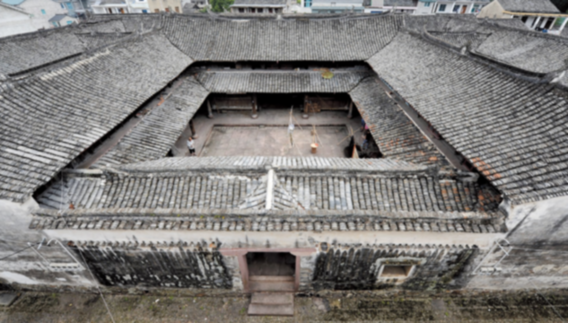Artisans work magic of restoration
 0 Comment(s)
0 Comment(s) Print
Print E-mail Shanghai Daily, September 16, 2017
E-mail Shanghai Daily, September 16, 2017
A group of uniquely experienced but aging local artisans have been devoting their later years to the tasks of restoring ancient buildings in Ningbo's Ninghai County.
|
Ge Zhaolong's team works on the houses built in Ming and Qing dynasties in Qiantong Town. |
They live a nomadic life in teams, moving to the location where a building needs rehabilitation. Most of them are aged around 60 and the oldest is over 70. Few of them are younger than 50. Their aim is to preserve ancestral structures using time-honored building crafts and traditional materials.
Zheng Shiqing, aged 64, is the leader of an eminent restoration team of about 30 people in Ninghai.
Zheng and his team completed restoration of the Shuangzhi Temple's main hall last December in Qingtan Village, Shenzhen Town, Ninghai. The temple was recognized by the State Council in 2006 as a key national cultural relic warranting protection.
It is an old wood-framed structure dating back 100 years and was designed with a quadrangle courtyard. There is an ancient Chinese stage in the center of the courtyard, open on three sides, elevated by wood pillars in four corners, and covered by a tiled roof with overhanging eaves.
The Buddhas sitting in the temple squarely face the front of the stage. Local villagers used to worship the Buddhas on bended knees and also gathered to watch operas performed on the stage.
Shuangzhi Temple was used as a temporary teaching center by Fenghua High School (in Fenghua District, Ningbo) from 1943 to 1945 during the war of resistance against Japanese aggression.
"The restoration is just finished and it's raining outside," Zheng told Shanghai Daily. "We're checking our work and see no rain leaking through the roof into the main hall. It proves we have successfully restored the roof."
The main hall of Shuangzhi Temple is a one-story structure with a curved tile roof supported by four pillars.
Dozens of new, round, yellow-colored logs integrated with ancient red lacquered logs can be seen in the roof, all serving as beams for the building.
"The new logs are fir, the same material as the original timber," said Zheng.
"The size of the logs is also the same, thus applying the so-called restoration technique of using 'old for old.' After two years, when the new logs are dried, we will lacquer them with the same red color," he added.







Go to Forum >>0 Comment(s)